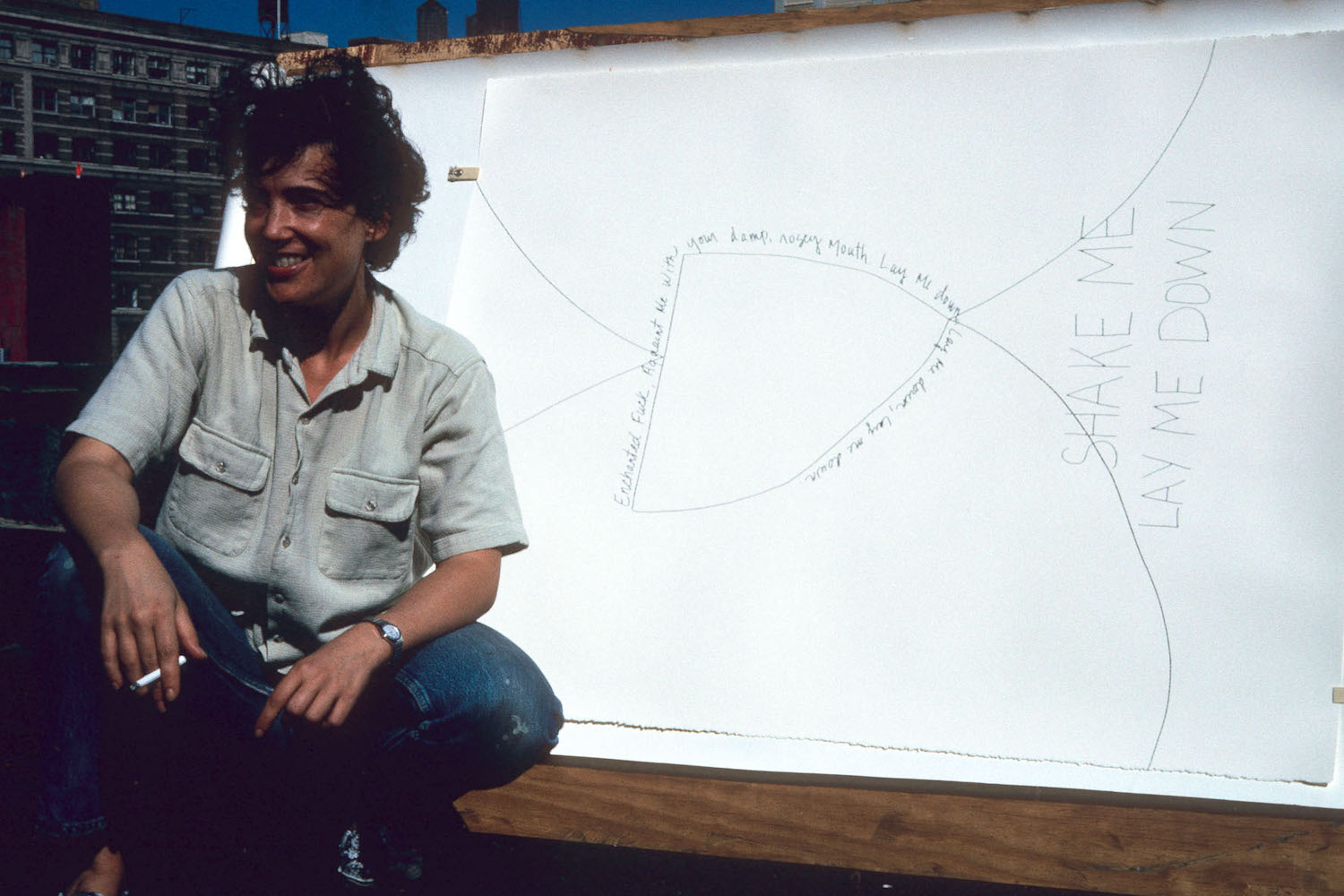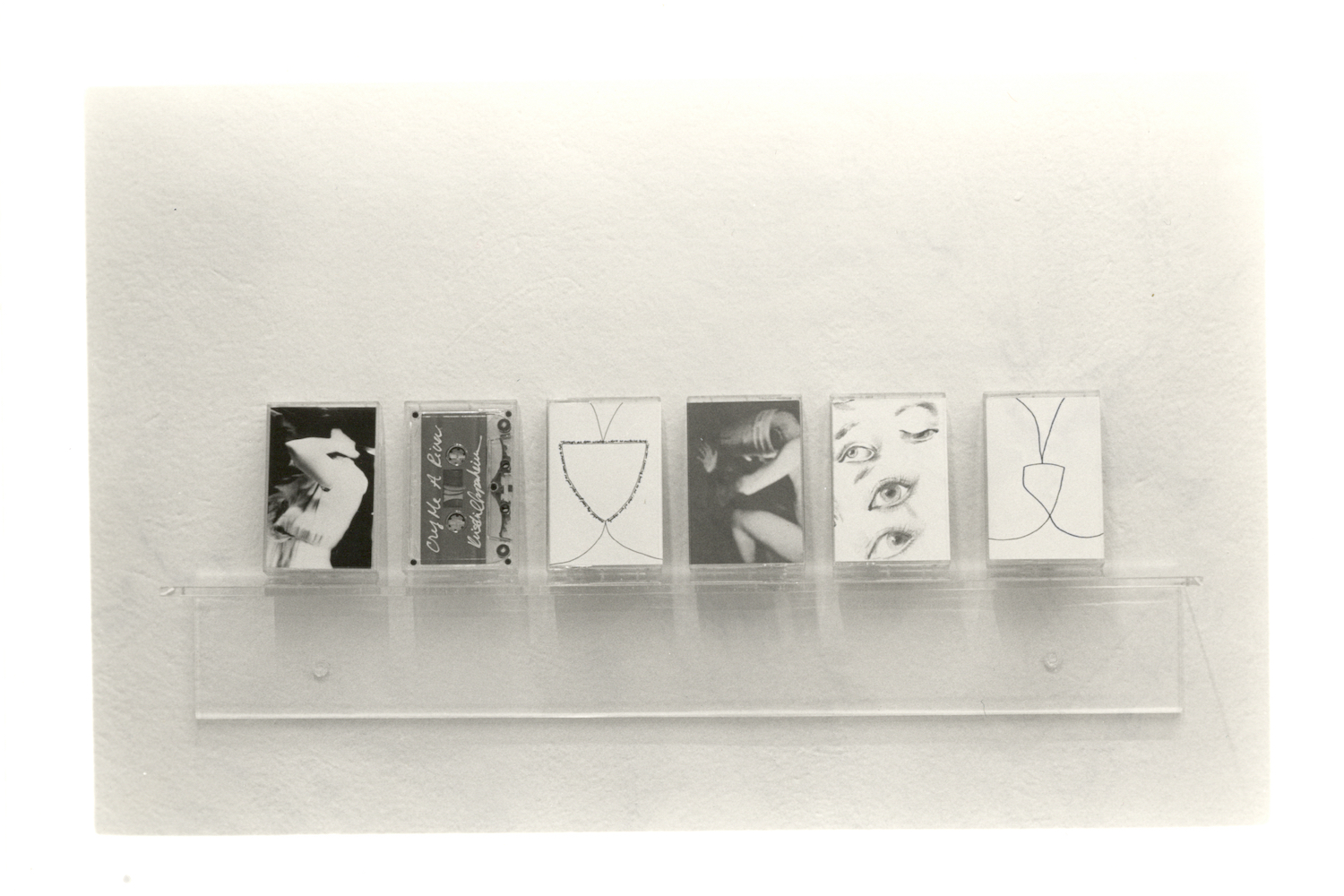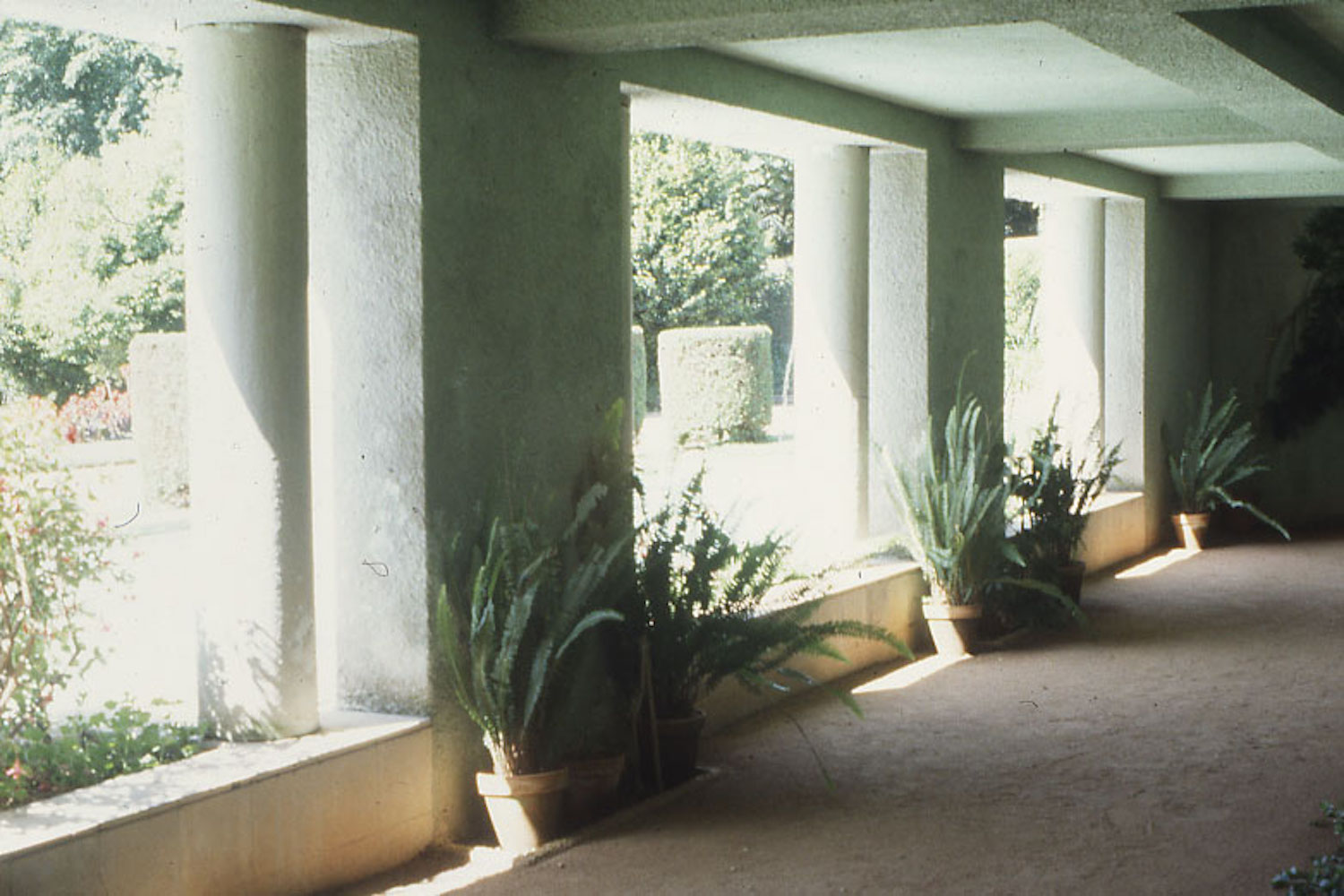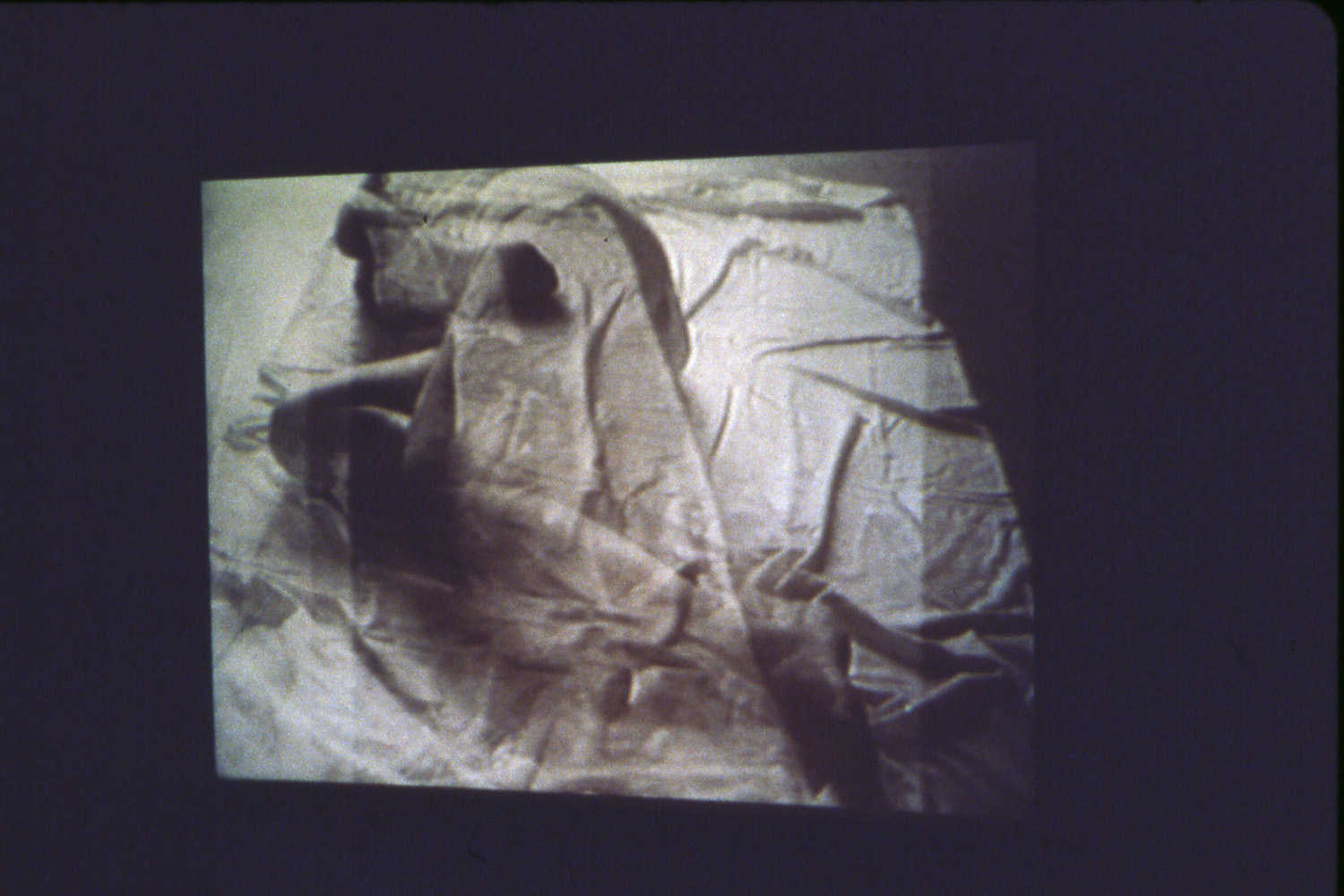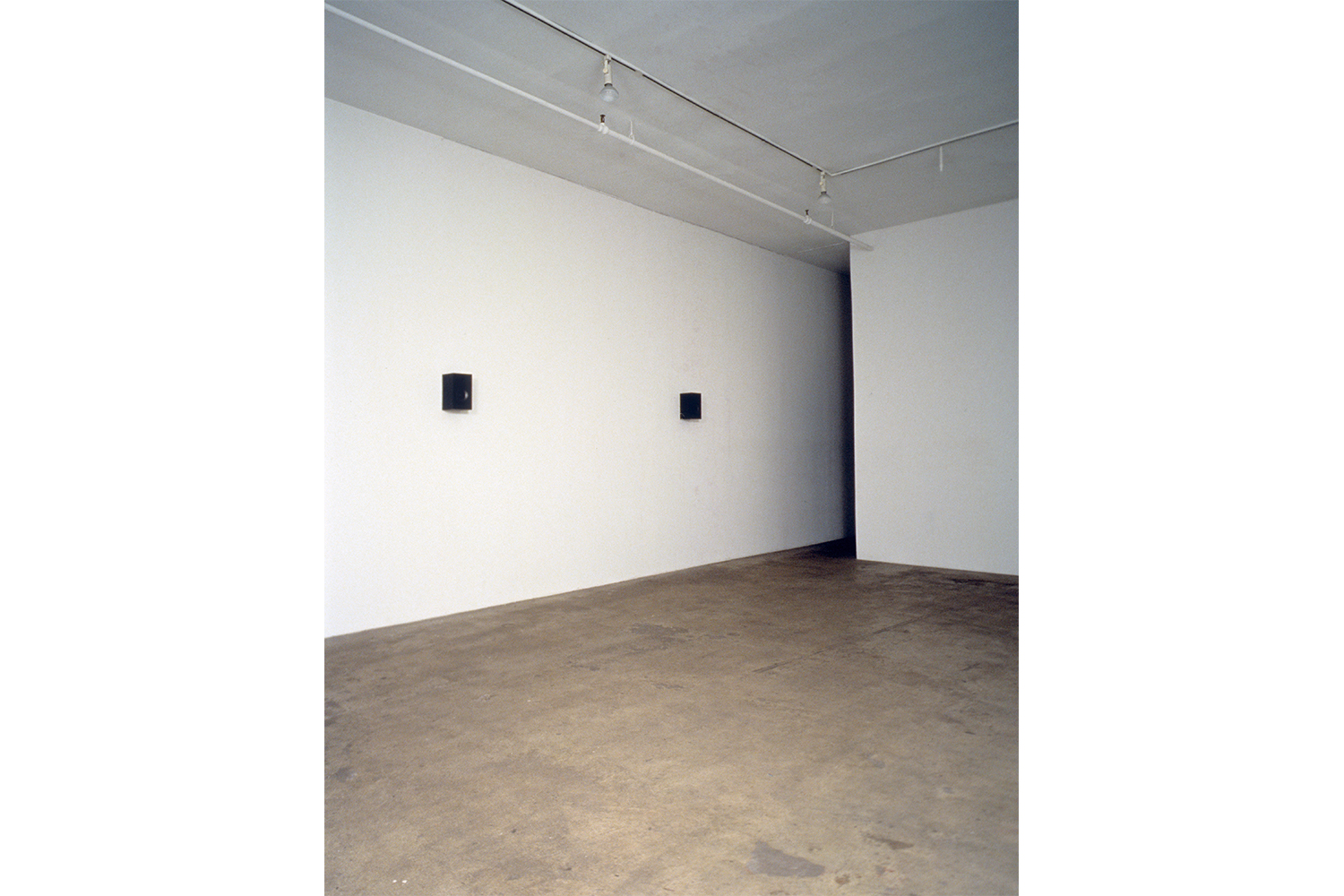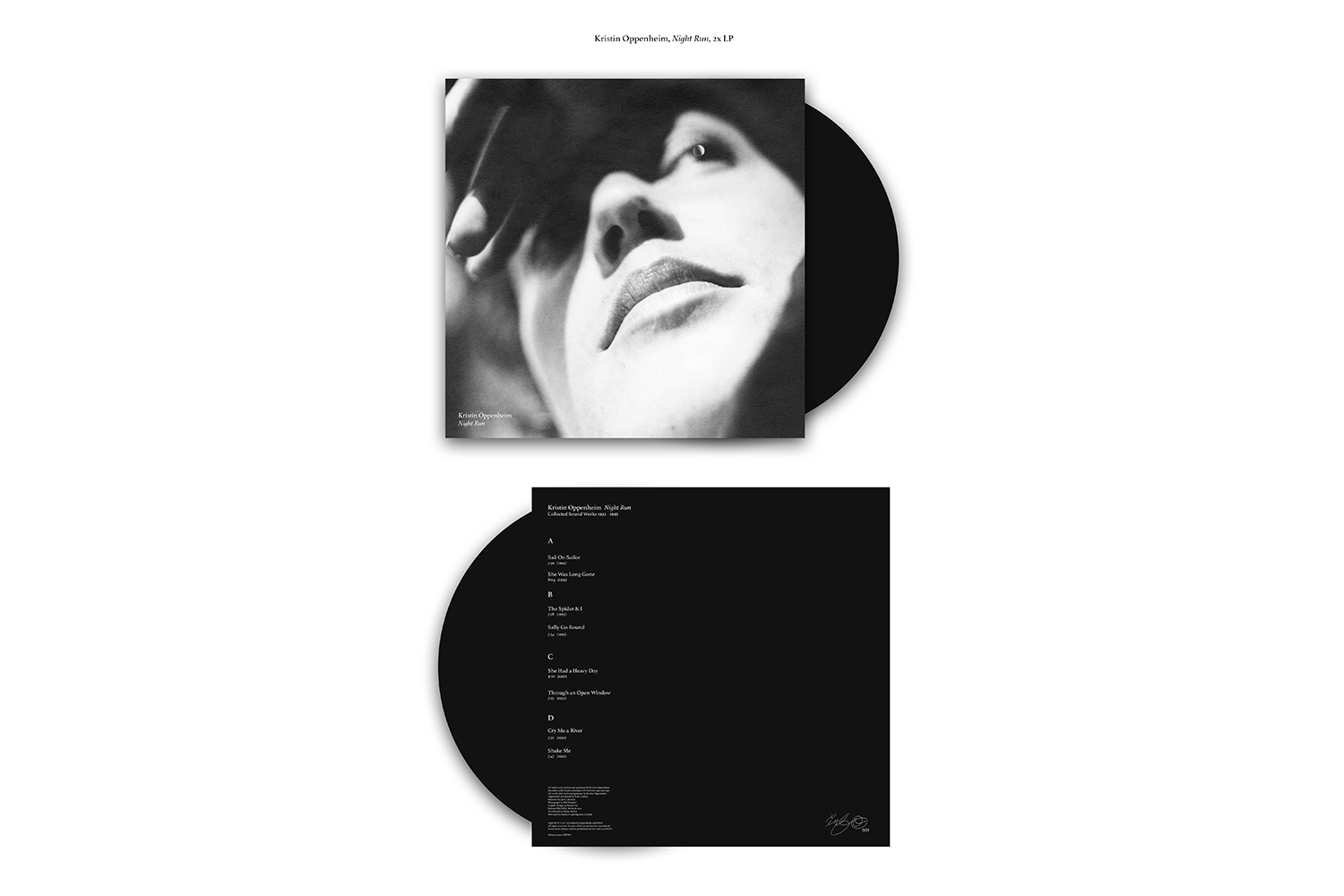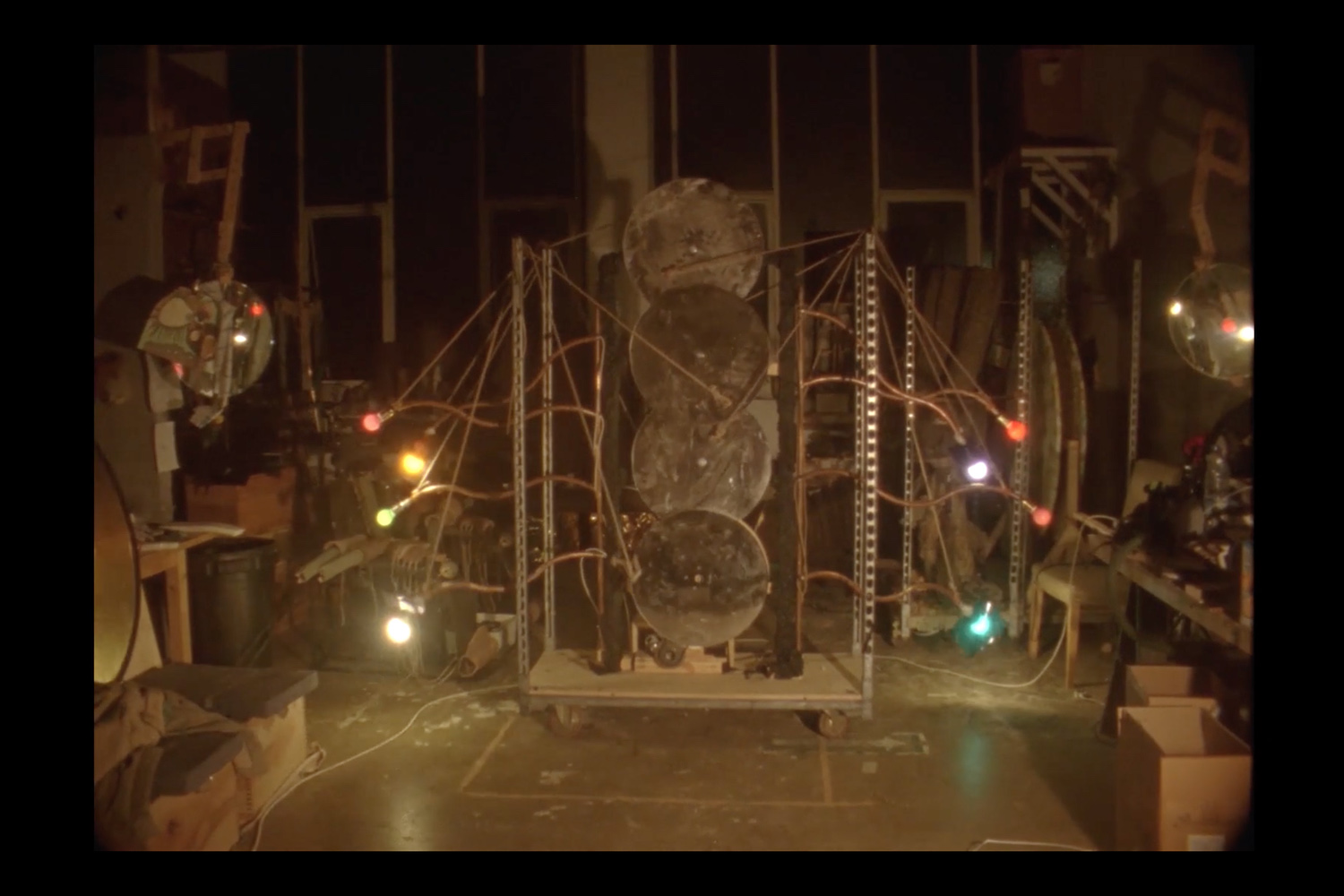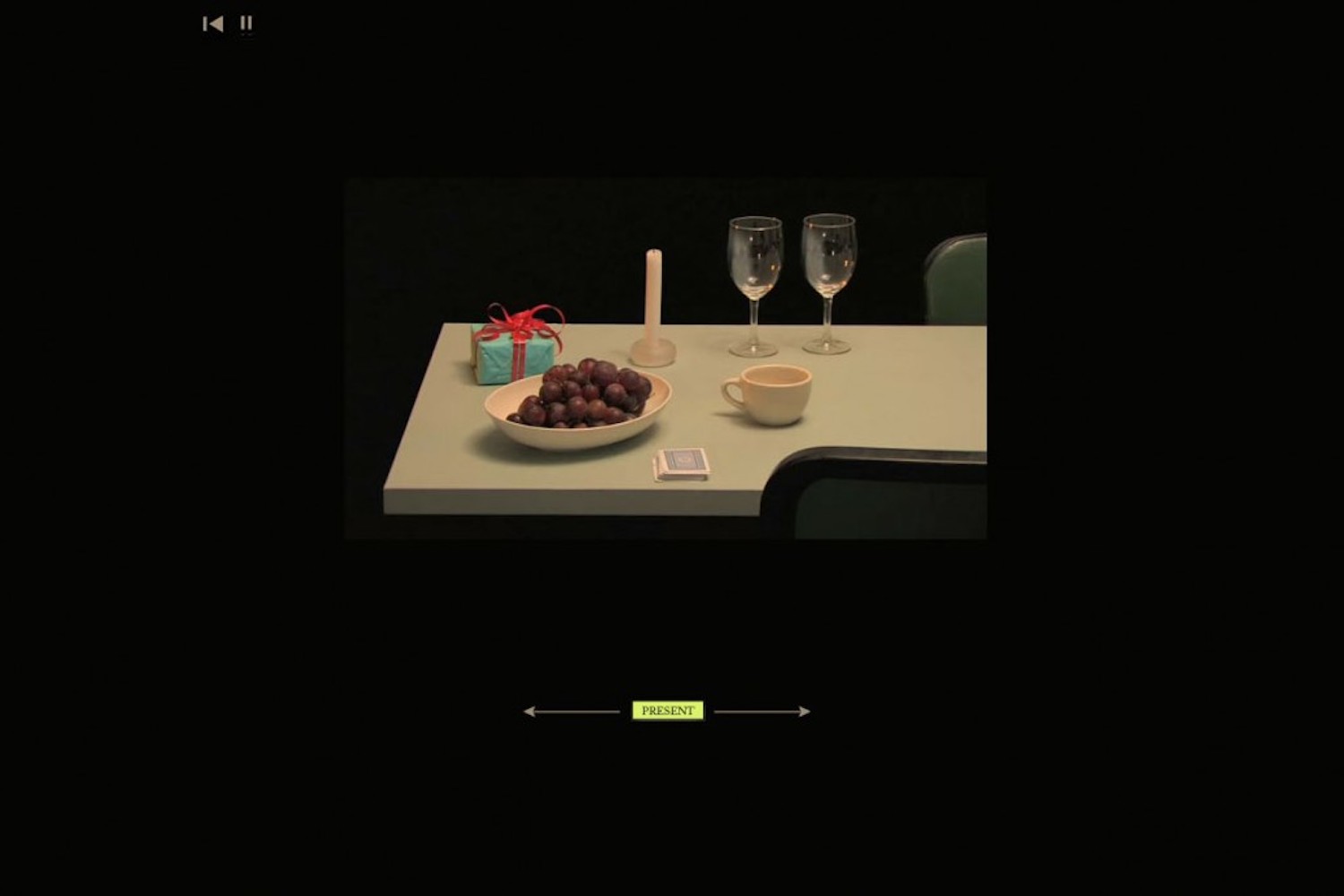“Listening In” is a column dedicated to sound, music, and listening practices in contemporary art and its spaces. This section focuses on how listening practices are being investigated and reconfigured by artists working across disciplines in the twenty-first century.
On May 21, INFO — a new label and interdisciplinary platform highlighting unique applications of sound in the field of contemporary art — will release Night Run (INFO001), a collection of sound works that Kristin Oppenheim recorded in her Brooklyn studio between 1992 and 1995. Drawing together ingenious configurations of installation, performance, film, and sound, Oppenheim’s work has been exhibited internationally; with Night Run, for the first time, her early vocal pieces are cut, sequenced, and released on vinyl, finally available to a wider audience.
Adina Glickstein: The release of Night Run is a significant inflection point in the evolution of this body of work: all of these pieces were conceived as sound installations in the 1990s, intended to be experienced in a physical gallery space. What feels different about presenting your work as a record, as opposed to an installation?
Kristin Oppenheim: The gallery installations are very physical in nature. So this is already not at all what a vinyl record is. The gallery installations are designed to work with the architecture of the space, and to offer the audience a place to spend time, and a place to listen. A sound piece exhibited for this type of installation will play endlessly in a loop, all day long. It’s an immersive experience for the audience, and it tends to get really hypnotic after a while. Listening to this same sound piece at home — while you wash dishes, for example — is going to be much different. It’s going to be a more personal experience, especially with headphones, which I find very refreshing! I don’t necessarily see the two as having different audiences. I think the same people that go to art galleries also buy records, don’t they?
AG: In my experience, at least, people in the art world so rarely express enthusiasm—there’s such a premium on this sense of coolness, of disaffection. Whereas, in experimental music, people are unashamedly nerds, which I absolutely delight in. A little bit of this distinction seems to be evident in the way that you and Reece Cox first connected: the idea of approaching an artist you admire feels so verboten in a lot of art world spaces, yet his eagerness in approaching you, driven by a genuine sense of fandom and dedication, catalyzed this collaboration. Tell us the story of how you two met and began working together?
KO: I first met Reece by chance in the cafeteria of MoMA PS1, in Queens, NY. This was in 2015. He was working as an art handler for the museum, and walked up to me to tell me that he’d been listening to my sound pieces since he was a kid in high school! Reece knew of my work through Ubu Web, which is a web-based site for poetry and sound art, founded by poet Kenneth Goldsmith in the mid-1990s. Reece was charming and enthusiastic and impressively knowledgeable about my work! So from that day on I’ve felt a special connection to him.
In the spring of 2020, right as the COVID pandemic was hitting New York City hard, Reece contacted me to ask if I’d do an interview over the telephone with him for his radio show. He had moved to Berlin, and was working as a DJ for Cashmere Radio, an experimental radio station based in Berlin. Soon after our interview, Reece contacted me again, to ask if I’d be interested in working on a record project with him, and that he was starting his own record label. He told me that I’d be his first artist on his label, and that he was interested in producing a record collection of my early a cappella vocal pieces from the 1990s. So Reece and I chose sixteen of my sound pieces, and we asked greengrassi, my gallery in London, to help oversee the project. That’s basically how it all got started.
AG: What drove you to start working in this format — repeated a cappella aphorisms? Layered, intuitively phrased snippets of language, half-spoken and half-sung, looping over and over?
KO: I started working with my recorded voice my senior year of art school, at San Francisco State University in the mid-1980s. The narratives I wrote were short, with just a few spoken lines of text that I would repeat. At the time, and all through the 1980s, my work was performative. I was in a band, and I was performing in films. The narratives that I was writing and recording were dark, in the sense that they were coming from a dark place in my psyche. They were about trauma and paranoia. But they were also sort of playful! So for me, the repetition in the work had a soothing, almost hypnotic effect. I also discovered that I could use this repetition to create a “sense of time,” or a different “sort of time.” Like a memory, coexisting in different times between two places.
AG: Your intuitive sense for how words and rhythms sound together is on full display in this work. Even though they’re a cappella, there’s an obvious musicality, which you build by repeating, panning, and layering. You described it to me as “braiding” at one point.
KO: Yes, I do seem to have a few innate musical abilities, although I’m completely untrained in any sort of conventional way. I’m good with “rhythm” and “phrasing” for example, which gives me the ability to twist and shape the layered lyrics into a musical tempo or beat.
AG: Certain songs, like “She Had a Heavy Day,” feature a gradual accretion of layers until they reach a point of saturation, bordering on sensory overload. Others, like “Sail On, Sailor” are more minimal, consisting of only two layers repeated in the round. Do these varying densities represent different emotional underpinnings to the music? What different effects were you hoping to evoke by employing these different approaches?
KO: “Sail on, Sailor” is a lovely piece. Very simple. I recorded this right after my daughter, Erin, was born. So for me it’s about celebration. “She Had a Heavy Day” is much darker; it’s more about having a bad day, which then turns into a nightmare! Both songs are emotionally charged, like all of my work.
AG: Why the choice to be poetic and abstract instead of spelling things out? So many of these songs seem to touch on a deep, emotional core, but they only ever approach it obliquely.
KO: The emotional core of my work is based on how memory travels in and out of time. So the narrative becomes inherently fragmented. I’ve never been a storyteller in the conventional sense. I don’t have that writing skill to create a story from the beginning to the end. I’m more drawn to the sounds of words and how I can build a narrative out of patterns. So in this way, the work becomes more poetic and abstract.
AG: How did you develop this method of music-making? What did your early editing process look like? What tools were you using?
KO: I had a cassette tape recorder that I used to record my vocals. I’d sing the lines over and over until I got them right. From there, I “sampled” the best lines onto a keyboard, to work out the arrangement of the piece. Each key had a different vocal line, so from here, I was able to play the keyboard like a piano to work out the composition.
AG: Listening to the demos, it’s remarkable how sculptural and spatial the sound still comes across. I’d liken it to the sensation of echolocating yourself in an immense, dark room. It’s as though you can crawl up inside of each sound and navigate around it by touch. When you composed these works, you were “choreographing” them in the sense that you could compel the listener’s movement through the physical gallery space. But even as a record, there’s a choreographic component. It’s almost as if the gallery space is still latent, just barely out of reach. How do you maintain this spatial quality in audio alone?
KO: Choreography for sure plays a part in the work, in the sense that the compositions are written for movement. It’s the layering and twisting of the narratives that give the composition its shape. There’s a pattern to it, and over time, as you listen, this pattern becomes more and more spatial.
AG: The title, Night Run, feels like it alludes to both the work’s physicality and to this emotional tension. There’s a darkness to it — whatever one is running from at night can’t possibly be good — but also a subtle humor, a play on the many meanings of a “run” that toys with the works’ newly finite duration. It’s almost kind of jubilant and illicit, too. You’ve mentioned that you considered titling the release Imaginary Places.
KO: Titles are fun to work with! I love this idea of “running” metaphorically. The meaning is so open-ended, full of possibilities, full of mystery. I also love the idea of “night” or “nighttime” — what does this mean? Darkness? Endlessness?
AG: The openness is so poetic! Like all of your work — I love that it refuses to be didactic. How has your relationship to this format changed in the last thirty years? You’re still making a cappella vocal pieces, including your new film installation, Bang Bang.
KO: Good question! Thirty years is a long time for a relationship with any art practice! If anything, I’ve learned to write fiction. I’ve learned to create new stories, not all just my own. And yes! On occasion, I still make a cappella vocal work! Bang Bang is my newest film, which features my latest a cappella sound piece. This work was just made last year, in 2020, and will be exhibited in London at greengrassi this coming fall, following the release of Night Run.

